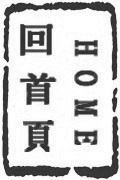
Solfège
听觉训练/Ting1 Jue2 Xun4 Lian4
n/a
CHEARS: False
EARS: True
CMT: False
EARS2 Encyclopedia: False
CHEARS:
EARS:
In Schaefferian theory, solfège is "the art of practising better listening"; it is an "experimental and realistic" approach to the sound object, a kind of becoming aware of the new materials of music while distrusting preconceived ideas and relying first and foremost upon what is heard. It is without notation, because it is intended to apply to the whole universe of sounds already available or capable of being made, and not only to the sounds of traditional music, of measurable pitch, and produced by a limited number of instruments. This solfège is situated more in the area of hearing than making, it is descriptive rather than being operational. The criteria, which it seeks to bring out, are not expressed by symbols leading to notations for new scores, but as a deepening of the act of listening, seeking in sounds their musical potential, prior to any plan of notation or composition. It is embodied in the five operations of his programme of musical research. Every sound object or criterion as the experimental solfège progresses is individually situated in types (typology), in classes (morphology), in genres (characterology), in species (analysis). The final two of these are treated more like a hypothese, whereas the first two are significantly detailed. (Paraphrase of Michel Chion (1983). Guide des Objets Sonores. Eds. Buchet/Chastel, Paris. 1995 translation by John Dack/Christine North.)
EARS 2:
参看其它/See Also
术语翻译/Terms Translator
术语校对/Terms Proofreader
术语顾问/Consultant to terminology
参考文献/Bibliography
讲座/Lecture
评论/Comments
发表评论(预先注册)/Add comment on this term(members ONLY)